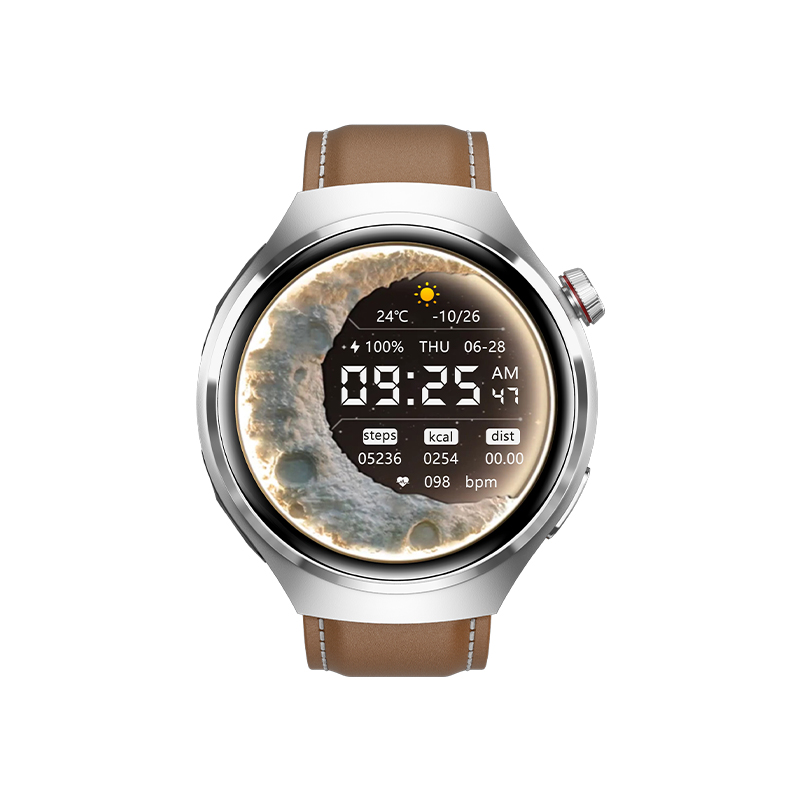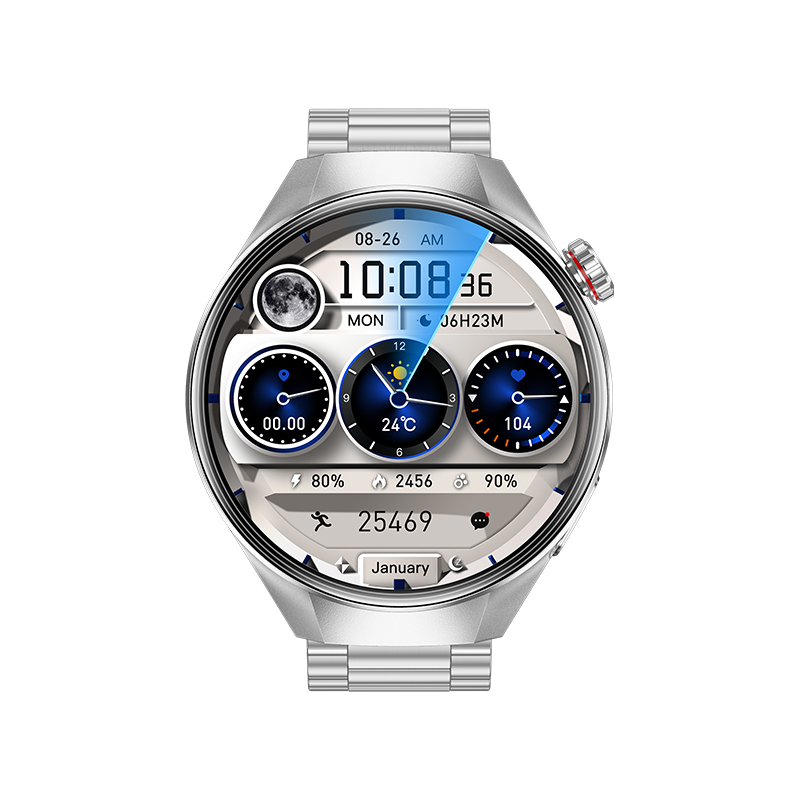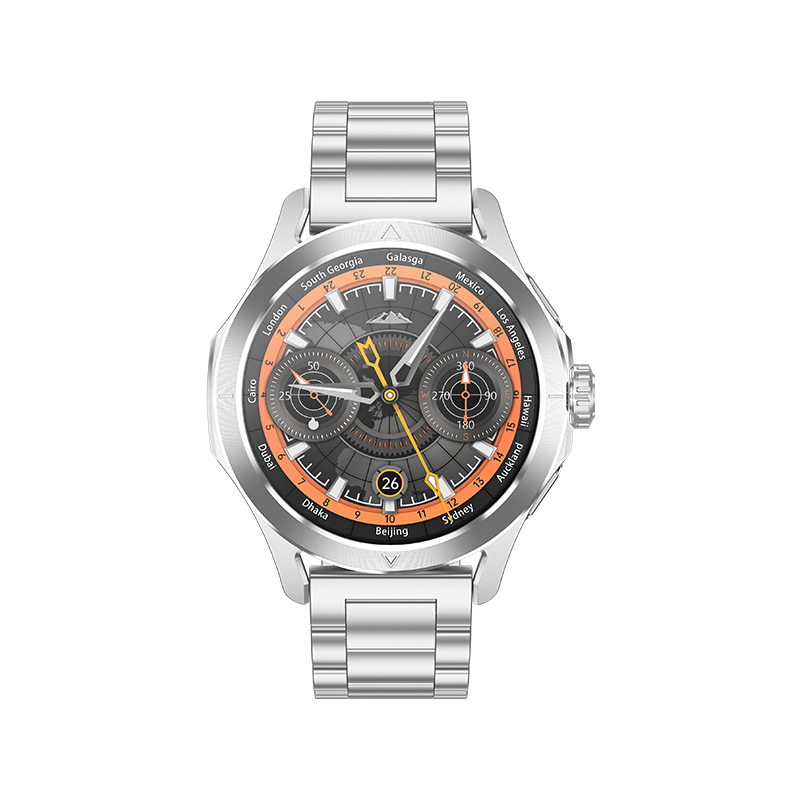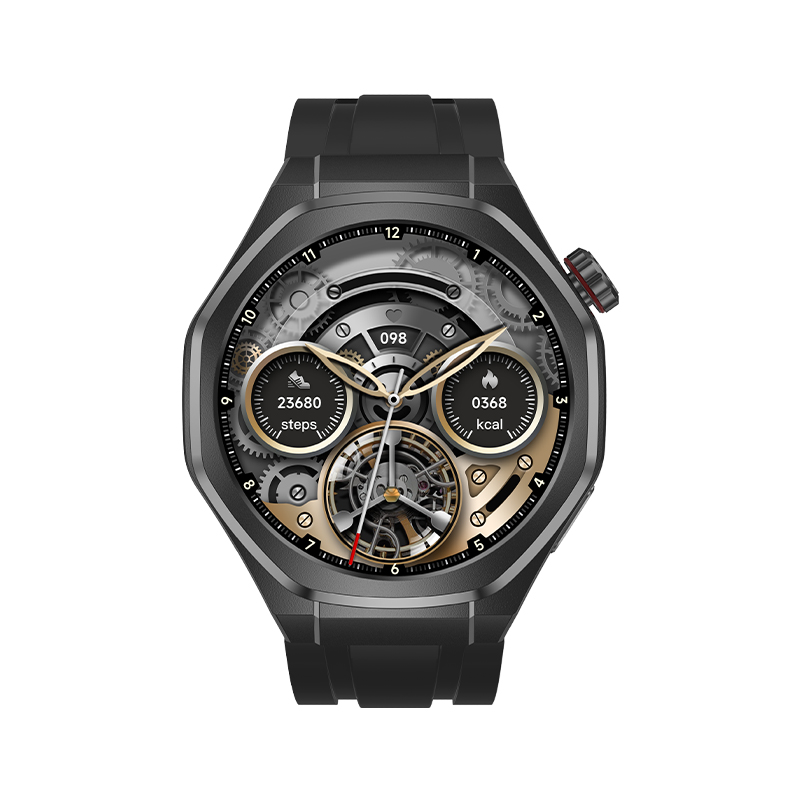Can smart bracelets monitor heart health in real time and detect abnormal fluctuations?
Release Time : 2025-10-09
In the fast-paced world of modern life, heart health is becoming a growing concern. Factors such as work stress, irregular work schedules, and lack of exercise can contribute to chronic suboptimal cardiovascular health. Many heart problems lack early symptoms and are often undetected until emergencies occur, missing the optimal time for intervention. The emergence of smart bracelets offers a convenient, continuous, and non-invasive way to manage daily heart health. They are no longer simply tools for counting steps or displaying the time, but are evolving into personal "heart guardians." Using advanced sensors and algorithms, they help users monitor their heart's rhythm in real time, detect potential abnormal fluctuations, and provide powerful support for health warnings.
Smart bracelets typically feature high-precision optical heart rate sensors. Using photoplethysmography, they shine a beam of light of a specific wavelength onto the skin, detecting changes in light absorption caused by blood flow and calculating heart rate per minute. This process requires no external equipment and does not interfere with daily activities. It can continuously monitor the user's heart rate while they are sitting, walking, exercising, and even sleeping. 24/7 heart rate tracking means it not only records a single moment of resting heart rate, but also reveals trends throughout the day—from the stability of resting heart rate in the morning, to its rise during exercise, to its recovery during sleep, creating a complete, dynamic picture. This continuity is unmatched by traditional sporadic heart rate measurements, making it more likely to detect occasional heart rate anomalies.
More importantly, the smart bracelet uses built-in intelligent algorithms to identify heart rate fluctuations outside the normal range. For example, a sudden, abnormally high heart rate while resting may indicate stress, dehydration, or a potential infection; while a persistently low heart rate without significant activity may indicate a cardiac conduction problem. Some high-end wristbands can also initially identify signs of irregular heart rhythms, such as atrial fibrillation, and promptly alert the user, recommending further medical attention. While this early warning feature cannot replace professional medical diagnosis, it provides users with a valuable "window of awareness," allowing them to proactively monitor their body's signals and seek professional help before symptoms worsen.
For those with chronic health needs, such as those with hypertension, diabetes, or those recovering from surgery, the heart rate monitoring function of a smart bracelet is particularly valuable. By observing the correlation between heart rate and lifestyle habits over time, they can understand the impact of diet, mood, and exercise on their heart rate, allowing them to adjust their lifestyles and optimize their health management strategies. For example, by comparing heart rate recovery rates after different exercise intensities, they can assess improvements in cardiopulmonary function. Or, by analyzing nighttime heart rate variability, they can assess the balance of the autonomic nervous system, indirectly reflecting stress levels and recovery quality.
Furthermore, the convenience of a smart bracelet makes it more likely to be used consistently over the long term. Its lightweight design, comfortable fit, and long battery life allow users to access data without the hassle and interruptions of traditional health monitoring. Data synced to a mobile app can also be visualized and charted, helping users more intuitively understand their condition and providing positive feedback for health management.
Of course, it should be clarified that the heart rate monitoring function on a smart bracelet is a consumer health aid with limited accuracy and functionality. It cannot be used for clinical diagnosis or to replace professional medical equipment. But its greatest value lies in its continuous companionship and proactive reminders, shifting health management from reactive response to proactive prevention. It reminds us to pay attention to often-overlooked bodily signals and cultivates sensitivity to our own health.
In summary, despite its small size, a smart bracelet can quietly safeguard heart health in everyday life. Through real-time, continuous heart rate monitoring, it helps users perceive subtle changes in their body, alerting them at the first sign of abnormal fluctuations and buying time for timely intervention. Choosing a smart bracelet with reliable heart rate monitoring means equipping yourself with a 24/7 health partner, allowing technology to become a bridge to a healthier life.
Smart bracelets typically feature high-precision optical heart rate sensors. Using photoplethysmography, they shine a beam of light of a specific wavelength onto the skin, detecting changes in light absorption caused by blood flow and calculating heart rate per minute. This process requires no external equipment and does not interfere with daily activities. It can continuously monitor the user's heart rate while they are sitting, walking, exercising, and even sleeping. 24/7 heart rate tracking means it not only records a single moment of resting heart rate, but also reveals trends throughout the day—from the stability of resting heart rate in the morning, to its rise during exercise, to its recovery during sleep, creating a complete, dynamic picture. This continuity is unmatched by traditional sporadic heart rate measurements, making it more likely to detect occasional heart rate anomalies.
More importantly, the smart bracelet uses built-in intelligent algorithms to identify heart rate fluctuations outside the normal range. For example, a sudden, abnormally high heart rate while resting may indicate stress, dehydration, or a potential infection; while a persistently low heart rate without significant activity may indicate a cardiac conduction problem. Some high-end wristbands can also initially identify signs of irregular heart rhythms, such as atrial fibrillation, and promptly alert the user, recommending further medical attention. While this early warning feature cannot replace professional medical diagnosis, it provides users with a valuable "window of awareness," allowing them to proactively monitor their body's signals and seek professional help before symptoms worsen.
For those with chronic health needs, such as those with hypertension, diabetes, or those recovering from surgery, the heart rate monitoring function of a smart bracelet is particularly valuable. By observing the correlation between heart rate and lifestyle habits over time, they can understand the impact of diet, mood, and exercise on their heart rate, allowing them to adjust their lifestyles and optimize their health management strategies. For example, by comparing heart rate recovery rates after different exercise intensities, they can assess improvements in cardiopulmonary function. Or, by analyzing nighttime heart rate variability, they can assess the balance of the autonomic nervous system, indirectly reflecting stress levels and recovery quality.
Furthermore, the convenience of a smart bracelet makes it more likely to be used consistently over the long term. Its lightweight design, comfortable fit, and long battery life allow users to access data without the hassle and interruptions of traditional health monitoring. Data synced to a mobile app can also be visualized and charted, helping users more intuitively understand their condition and providing positive feedback for health management.
Of course, it should be clarified that the heart rate monitoring function on a smart bracelet is a consumer health aid with limited accuracy and functionality. It cannot be used for clinical diagnosis or to replace professional medical equipment. But its greatest value lies in its continuous companionship and proactive reminders, shifting health management from reactive response to proactive prevention. It reminds us to pay attention to often-overlooked bodily signals and cultivates sensitivity to our own health.
In summary, despite its small size, a smart bracelet can quietly safeguard heart health in everyday life. Through real-time, continuous heart rate monitoring, it helps users perceive subtle changes in their body, alerting them at the first sign of abnormal fluctuations and buying time for timely intervention. Choosing a smart bracelet with reliable heart rate monitoring means equipping yourself with a 24/7 health partner, allowing technology to become a bridge to a healthier life.







